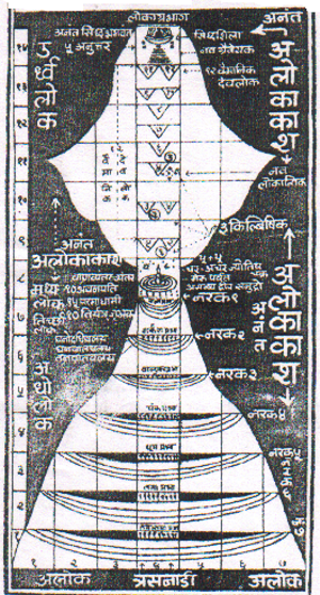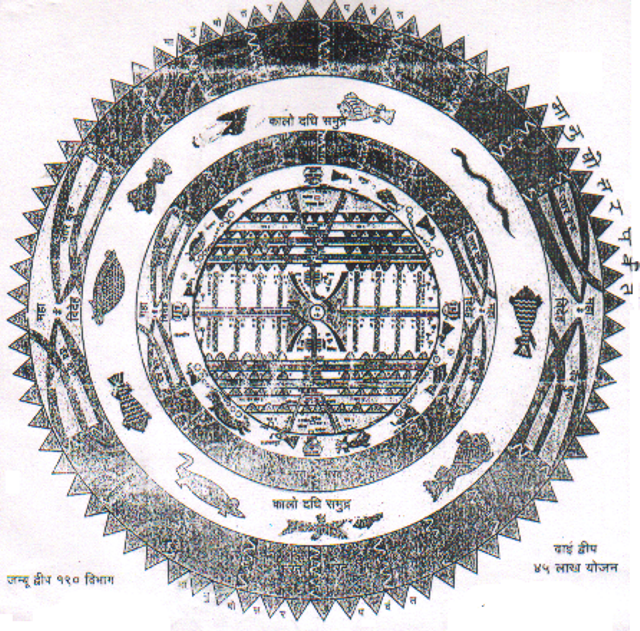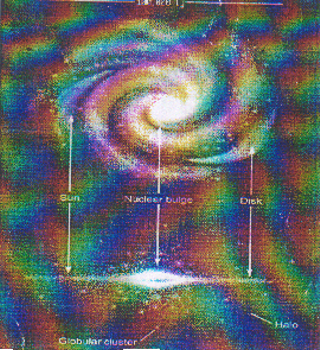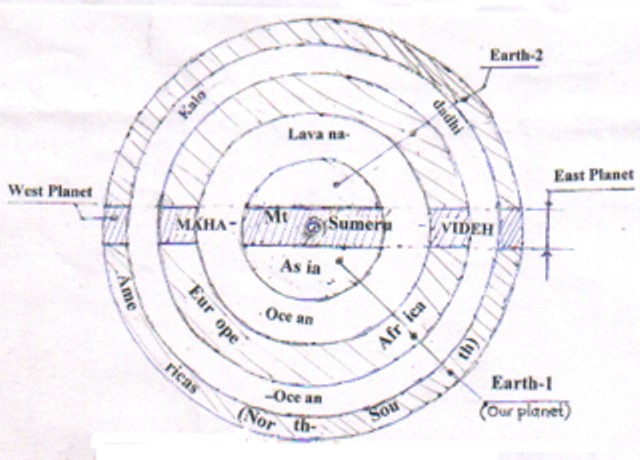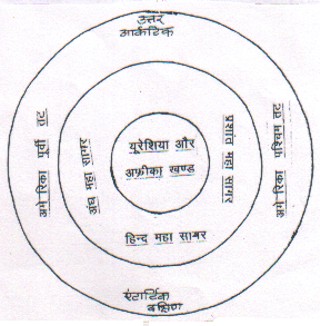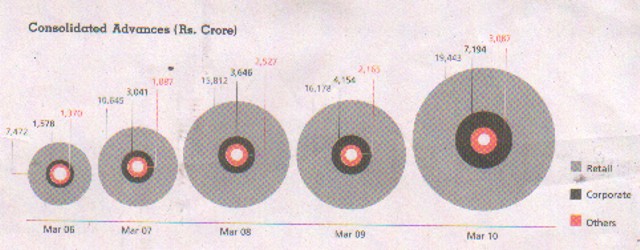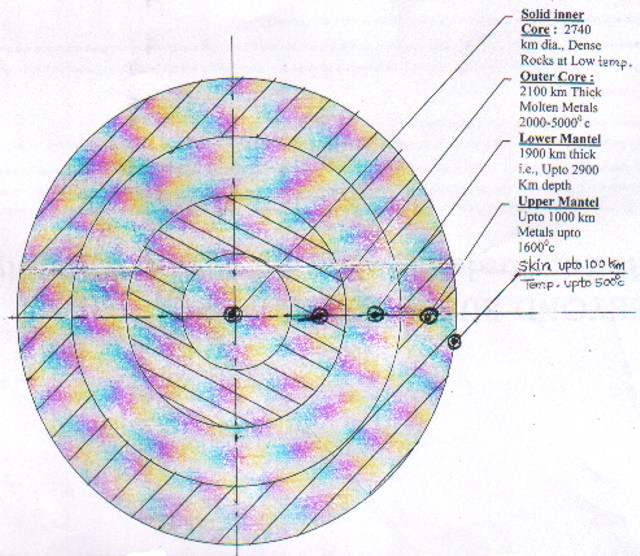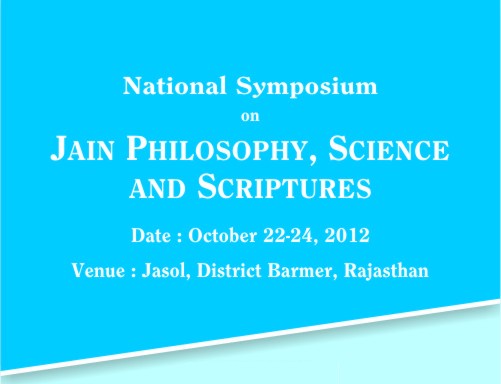
National Symposium on Jain Philosophy, Science And Scriptures
Scientific Interpretation of Jain Lokakash Map
01. Jain-Lokakash
The map of Jain Lokakash (Ref 1) does not match with the traditional Geographical maps, even with those prevalent in 4th century B.C. (Ref 2)
As per Jain Agamas, the Universe is depicted very well by the Kevalins (Omniscient) through the map of Jain Lokakash (fig. 1). Its Upper part, called Urdhva Loka has a height of 7 Rajjus (R). It consists of 8 types of Deva Loka (land of devas) and Siddh Sheela (Ref 1). The Lower Loka consists of 7 types of Narka land (land of infernal). The Middle Loka (fig. 2) is arranged around the mountain Meru. Its innermost circular land mass (Ref 2), termed as Jambu-dweepa, is surrounded by a circular ring of water-mass, called Lavana Samudra. Innumerable such pairs of land-water mass go on forming the Middle Loka.
The first 2.5 dweepas provide habitation for human-beings. Beyond these dweepas, mankind cannot go and survive.
02. Present cosmology and geography
- Our planets
like earth, mars etc are the 9 planets of the Sun. Our Sun is located at the outer fringes of half arm of our galaxy named as Akash Ganga (fig. 3). There are more than 1000 billion such stars as Sun in the galaxy (Ref 3, 4). Our earth is supposed to be a part of Jambu-dweepa. It is located in the south and is termed as Bharat Kshetra, adjoining Lavana Samudra. Mahavideh Kshetra is located from east to west, in the central part of Jambu-dweepa.
It is possible that these 2.5 dweepas represent some 2.5 earth-like planets of 3 solar systems (fig. 4). Some of them may be located outside of our milky-way.
In this Universe (Lokakash) there are more than 100 billion galaxies. So how do we comprehend and represent this colossal universe. On top of it, scientists claim that the visible mass of universe is merely 4 % of the Universe. We have almost 72 % in-visible dark energy and 23 % invisible mass (Ref 5).
- Geography
Our spherical earth is a planet, rotating around the Sun (fig. 5). It has horizontal islands of Eurasia, vertical islands of Africa and Americas from north to south (Ref 6).
Their coastal areas are unsymmetrical and zigzag (fig. 5) in shape. At places earth-mass protrudes into water-mass or water-mass protrudes into earth-mass.
03. Anomalies between Lokakash and our Geographical maps
- Our science has not been able to locate any pairs of Dweepas & Oceans, having such symmetrical circular shapes (fig. 2). Every continent has zig-zag and odd shaped coastal contours. The collective land-water (continent- Ocean) entities may, at best be represented by maps like fig.6 or 6a. But still they hardly correspond to symmetrical shape and location of 2.5 dweepas! Then why the Omniscient have not tried to iron-out this major difference between the prevalent geographical maps and dweepas of middle Loka.
- Our earth is considered to be round as orange shaped, where as Lokakash shows it as a flat disc type at the center of middle loka.
- Scientists have flown around and across the earth, but have not located any Maha Videh kshetra or Naraka Loka, supposed to be below the earth. This is contrary to the description of Jambu- dweepa.
- We had many Karma bhumies (like Bharat Kshetra) and many Bhog-bhumies on this earth (Ref 7,8). It is now noted that all the civilizations are raising their aspirations and becoming Karma-bhumies.
- The Aras (period of Time) are becoming similar to the 5th Ara all over the world. The differences in conditions at various continents are narrowing down. We are not able to locate conditions of 4th Ara or 2nd Ara on our earth, as are mentioned for Jambudweepa.
- Jain Acharyas are spending huge sums of money and resources to prove that science is wrong. It seems to be a futile exercise of Jain Samaj.
How do we account for it?
04. A big question
On comparing and interpreting both the maps on Geographical Scales, we notice numerous inconsistencies, incongruities, incompatibilities between these two types of maps.
05. Just Rethink
Before we re-look and rethink about these two types of maps, let us do one exercise.
Suppose we are asked to show distribution of earth population density, in steps like 0-, 1-100, 100-1000, 1001-10000 persons / sq. km etc. All these types of similar density areas are clubbed together and then represented by a chart called pie-chart (fig. 8). The representation of the statistical data at a glance by a pictogram, like pie, bar or ring-chart, is a standard mathematical method. Such charts have some special features, which must be kept in mind, while using them (fig. 9 & 10).
06. Possible reasons
A logical conclusion would be that there existed no such problem of mismatch at that time.
Probably we have forgotten the method to read such maps. Let us re-search it.
07. Analysis
Let us view lokakash map again from an entirely different angle. Mathematically, it shows that
- The total Living and Non-living matter (Dravya) and its distribution in the Universe.
- The matter has been arranged symmetrically and systematically as collective aggregates, for easy understanding of a layman, in some form of Pictograph of bars (Upper and Lower Loka, fig. 9) and rings (Middle Loka, fig. 10) charts.
08. Pudgal Dravya
As per science, Matter exists in 7 phases.
- First 3 phases:- Land and Water (with gas) in form of rings of land and water –it would form Middle Loka.
- The 7 stages, as found inside the earth, in form of bars/strips- -it would form Lower Loka.
- The last 3 phases (as created in labs):- in form of bars and strips- - it would form Upper-Loka (Vaimanik Deva). See Annex-1.
After obtaining the shape of universe by stacking one phase of matter over the other, we look into the arrangement of its living-beings.
09. Living-beings
The form of Lokakash as per Bodies (sharira) of living-beings.
- i) There are two types of living-beings. Mobile and Sthawar.
- Each state of matter supports, in a befitting manner, a particular type of Body/ Kaya of living-being, so that each type of mobile living-beingcan also be clubbed together. The matter of Upper and Lower Loka supports mobile creatures of specific type of Vaikriya Pudgalas. Living-Bodies of Shubh Vaikriya Pudgalas are arranged in Upper Loka and those of Ashubh Vaikriya Pudgalas are arranged in Lower Loka. The total areas of specific phase of matter, occupied by such different creatures, are observed and measured by Omniscient and are displayed in the above mentioned Bar-Charts. As for example, 5th phase of matter may support only Vaikriya bodies, i.e, bodies of a particular type of Devas(celestial-beings).
Similarly the first 3 phases of matter support Audarik Bodies of mobile as well as non-mobile living-beings. But the mobile creatures of Audarik Pudgalas are found only in the Middle Loka.
- Strangely enough, it is found that all types of mobile creatures could be accommodated in a tubular area of their respective material phases, called Tras-Nadi of 1R diameter. All living-beings of Vyavhar Rashi are confined in the Tras-nadi only.(fig.12, Ref 7, 8)
10. Display of 6 Dravyas of Universe in Lokakash
11. Conclusion
As per science, different types and phases of living and non-living matter respectively, are scattered all over this vast Universe, it would be impossible to show and understand their locations through any prevalent geographical maps. The Omniscient have, by use of this decorative looking pictographs, made us, the ignorant, understand the contents of this Universe in a simple, plausible and quantitative language. This symmetrical show-piece gives, at a glance, important information about the distribution of all the living and non-living matter of the Universe.
12. Discussion on the Results
Without changing or altering any Agmik content, it is now possible to interpret the distribution of Jeeva and Ajeeva rashi of the Universe, in line with the most of the present day scientific knowledge. It enables us to take the modern scientists in a realm beyond the present day knowledge and explain its unknown features in a plausible manner. Some of the important revelations are as follows:
- The existence of extra-terrestrial civilizations, extent of their development stage.
- Other forms of materials and their quantum.
- Other types of physical bodies of living-beings.
- Other forms of highly developed living-beings.
References
- Pu.Trilok Muniji, Correspondence on Jain Trilok, 2010
- Fyodor Korovkin, Pracheen Vishva ka Itihas, (Manchitra), Pragati Prakashan, Moscow, 1986
- Dr. N. L. Kachhara, Cosmology,Article received on mail (A part of Jain Metaphysics.).
- Dr. Subodh Mahanti, Khagol Vigyan ki Utpatti aur Vikas, Avishkar, Dec. 2009
- Vishv Mohan Tiwari, Adrushya Urja:Brahmand ka Anaytam Rahasy, Avishkar, Aug. and Dec. 2010
- Oxford School Atlas, Oxford Uni. Press. 2010
- Pu. Amolak Rishiji MS. Jain Tattva Prakash, Amolak Jain Gyanalay, 1968
- Muni Praman Sagarji, Jain Tattva Vidya, Karnanuyog, p108, Bharteey Gyanpeeth, Sept. 2000.
- DR. B. Chakravarti, Did Indians Colonize Latin America, Sunday Magazine, ABP, Kolkata, 13.0.8
- Justin Vark, Vaigyanikon dwara padarth ki ek aur avastha ka sarjan, reported from Journal Nature in Avishkar, Nov. 2009
- Dr Vijaykumar Upadhyay, Kitna hai Bhoogarbh Ka Tapman, Vigyan Pragati, July 2007, p15.
- Dorothy M. Noronha, Voyage Geography for Middle School, Oxford Uni. Press.
Annex 1
Chart-1 Distribution of Matter in Upper Loka:
Every matter-phase can have 3 sub-types: maxima, medium & minima
Sn
State of matter
Type of Vaimanik Deva
Sub-type
1
4th State
(Plasma)Jyotishk
(medium & minima)
Bhavanpati & Vyantar2
5th State
(E-B condensate)Kalpaj Vaimanik
(having Hierarchy)Saudharm to Achyut Deva
(1st to 8th Devloka)3
6th State
(D-F condensate)Akalpaj Vaimanik
(Kalpateet)Graiveyak, Anudisha & Anuttar Deva
Annex 2
Support for physical matter
(Ref. 5th Adhyaya, Gatha 56, Tattvarth Sutra-, by Prabha Chandra)
“JEEVADERLOKAKASHE VAGAH”
“Soul (Jeeva), Matter (Pudgala), Medium of Motion (Dharma) and Medium of Rest (Adharma) are supported by Lokakash, i.e. space within the boundaries of universe.”
That means, neither Vatvalay / Vatpind requires any land-mass for its support nor any Land (Bhumi) requires support of Vat-pinds!
Table of Figures
Fig. 1: Lokakash of 14 Rajju (Brahmand) in Ornamental Style
Fig. 2: Middle Loka as Circular Pairs of Land and Water
Fig. 3: Our Akash Ganga (Milky Way), Front and Top view
Fig. 4: Adhai Dweepa fitted as Adhai Earth-like planets in 3 Solar Systems
Fig. 5: A Geographical Map of our Earth
Fig. 6: Presentation of collective land-water mass of our planet
Fig. 6b: Presentation of collective land-water mass of our planet (II)
Fig. 7: Map of our Earth, as shown by Bhaskaracharya, 1134 AD
Fig. 8: Pie-Chart for distribution of population density
Fig. 9: Different phases and states of matter in the Universe, presented as Bars around an Axis
Fig. 10: Ring-charts to depict advances to different entities
Fig. 11: Different states of material at different depths inside our Earth
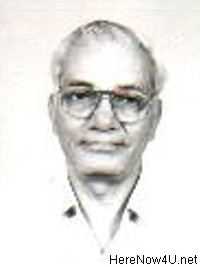 Dr. Jeoraj Jain
Dr. Jeoraj Jain
